Science, Art, and the Sacred
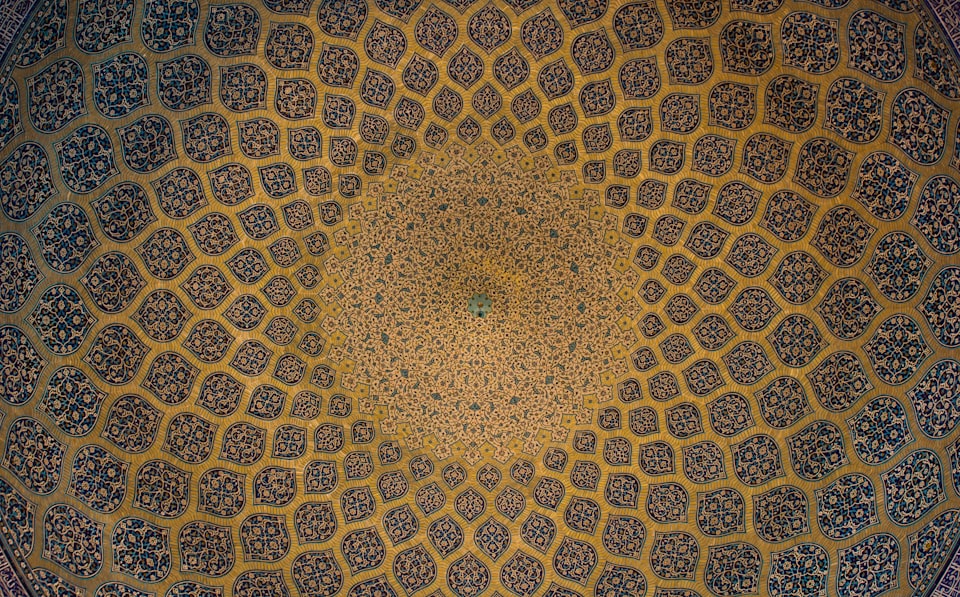
Imagine you're standing before a breathtaking piece of art, say a stunning cathedral or magnificant mosque. You're marveling at the precise patterns, the perfect symmetry, and harmonious proportions that seem to elevate the work to a higher plane. What many of us may not think about in front of this work is how its creation requires a profound if intuitive understanding of science and mathematics.
In this episode of our podcast, I interview David Clayton, an iconographer who began his journey as an Oxford materials scientist. He shares his insights into how his scientific background has enriched his approach to creating sacred art and unveils the connections between scientific intuition, artistic creativity, and the pursuit of beauty and truth.
Born and raised in England, David Clayton is an internationally known artist, teacher, writer, and broadcaster living in Princeton, NJ. He is Provost of online Catholic university Pontifex University, where he created their unique Master of Sacred Arts program; and is currently Artist-in-Residence of Scala Foundation, a non-profit based in Princeton, which has a mission of transforming American culture through educational programs that encourage creativity.
David's scientific and mathematical training has played a significant role in shaping his approach to Christian iconography, a traditional and methodical art form that relies on precision, planning, and adherence to a visual vocabulary. The knowledge of science and mathematics allows David to understand the patterns, proportions, and harmonies that are essential for creating sacred art that evokes a sense of beauty, order, and transcendence. By combining his scientific intuition with his artistic creativity, David is able to craft stunning pieces that touch the hearts and minds of those who engage with his work.
In this episode, David discusses the role of intuition in both science and art, and also shares intriguing examples of how scientific discoveries, such as the arrangement of subatomic particles, can echo ancient patterns found in sacred art and architecture. He delves into the significance of mathematics in understanding and depicting beauty in art, like the curves and folds of a cloth. By incorporating his scientific training into his artwork, he is able to create captivating and harmonious compositions. However, beauty remains challenging to measure or quantify, and David encourages a healthy skepticism towards both art and science's capacity to ascertain truth.
You can watch or listen to our conversation below. An unedited transcript follows.
Subscribe wherever you get your podcasts: iOS | Android | Spotify | RSS | Amazon | Stitcher | Podvine
Interview Transcript
Brandon: David, it's really such a pleasure to have you. Thank you so much for joining us today.
David: Thank you very much for asking me. I'm very happy to be here.
Brandon: Yeah, great. Well, David, you have a very unique background. As an artist who is trained in the sciences, could you tell us a little bit about your scientific training and your background in the sciences?
David: Yeah, so, I studied Material Science at Oxford University as undergraduate. In the days, when you did your undergraduate and you came out with a master's, which I think they stopped now. I was hoping I'll get a master's in material science, which is really the physics of solids with a view to making use of the materials for engineering purposes. It's a bit highly theoretical but with an end which is directed towards the use of the materials. Then I went on and did a master's in metallurgical engineering at Michigan Tech. And so, that's my scientific training.
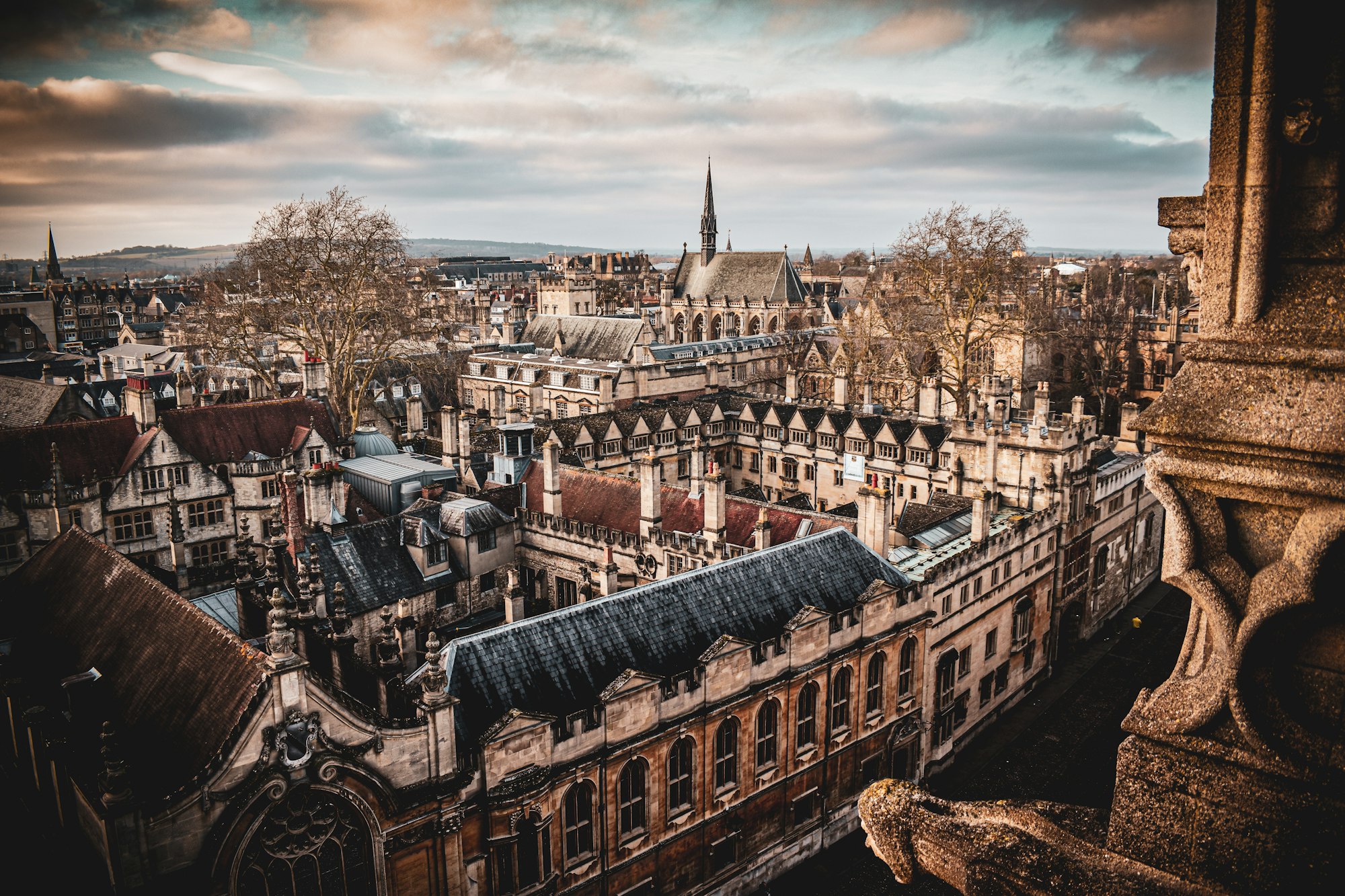
Then my artistic training, I'm largely self-taught, in fact. Which is fine because, on the whole, people buy paintings based upon what they look like, not based upon what the qualification of the person who did it is. But I have done classes, selecting classes, with an iconographer who paints in the style of Greek icon sacred art, and really allowed him to mentor me and guide me. So, I wasn't without direction and advice over the years. A guy called Aidan Hart. Then I did spend a year in Florence learning what's called the academic method of painting and drawing, which is a very rigorous way of drawing naturalistically, a method that was developed in the high Renaissance period, and just about survived the destruction of the academies at the beginning of the 20th century, and is now beginning to flourish again.
Brandon: Wow. What led you to the material sciences in the first place? What drew you to become a scientist?
David: It was what I was good at in high school, really. Also, I enjoyed art. I was good at art. So, those are the topics that I was best at. But the high school was very focused on academic interest. And so, it wasn't something that they encouraged. I must have had pushed too hard. In England, at the age of 16, you took what's called O-levels, ordinary level exams. They would be in 9 or 10 subjects. So, it's quite a broad range. Then at the age of 16, you narrow it down to the pursuit of three subjects. I, at that stage, had to choose. I chose math, physics and chemistry. And so, from that point on, I had never studied the humanities. I hadn't written an essay from the age of 16 onwards, until I started to write books many years later on the subject of art culture.
Brandon: Yeah, I mean, I grew up in a similar system in India. I think our system was modeled after you. So, it was very much specialized essentially after the O-levels. It was a great 10. You split up into the arts or into the sciences and you pursued the sciences. Similarly, you get no background at all then from that point on in anything, in the arts or literature or humanities or anything of that sort. So, did you find them, as you were pursuing your scientific career, were you still active in doing any artistic work? Was that set aside until at some point you decided to take it seriously? And how did that come about?
David: Well, obviously, it's set aside. I didn't really think about it that much. It wasn't until I left university. Actually, when I was at Michigan Tech, I entered an art competition. I started to feel a bit frustrated because I also wanted to get back into — I think a friend of mine, I saw that he was drawing and painting. I liked what he did. I thought, actually, I know I can do that. So, let's have a go. I produced a painting. I entered the annual art competition and won it that year. I got the Popular Vote and the Judges Award. It's still the only prize I've ever had in art. But it encouraged me to have a go and pursue it once I'd left university.
Brandon: At what point did you decide to — I mean, were you working in the sciences for some time?
David: No, very little. I left the university. I initially tried to get a get work in some charity nonprofits. I was quite idealistic. And so, I wanted to help the poor and change the world. I thought that would be the way to do it. I found that although I was involved in that world a little bit, I didn't really enjoy it that much. Because I was working pretty much in just — an office job is an office job. It didn't feel very different from anything else. I might have done it on bins or bank or something. So, I started to paint and draw in my spare time. At the same time, I had a lot of dissatisfaction with the direction my life was going. Not the main topic of discussion today. But that ended up with me five years later or something. Now I'm aged about 30 in my conversion to Catholicism.
As part of this process of questioning what I was doing with my life, and what did I really want to do, I have developed a faith in God. I met some people who helped me a great deal. This is an example of their lives inspired. They encouraged me to believe that every person has a calling by God, and they encouraged me to pursue art. I was given some great advice. There was a guy who encouraged me very strongly. He just said, "If you inherited so much money that you never had to work again for the money, what activity would you choose to do nine to five, five days a week?" I said paint. He said, "Well, I think that's what you should do." His premise was that, as long as what you want to do isn't inherently bad, or destructive, or evil, then there's no reason to believe that God doesn't want you to do that if that is your calling, for those who don't believe in God. He then said that the way to pursue this is just take one step at a time towards that end and if it's what is meant to be. So, there is a sense of a calling and some higher power, shall we say, opening up a path ahead of us. I think it's one of the assumptions here. But if that is the case, that the path will open up and doors will start to open.
And so, I did that. My first step was just doing evening classes at the local school where I was living in West London at the time. Just from there, incrementally, it took off. What happened is that I found that the more I painted and drew, the more I wanted to do it. There were other things that I did that were nice hobbies, or they were interesting, but I couldn't imagine devoting my life to it. But when I was drawing and painting, I was fulfilled. In a way, that allowed me — a bit like with the faith — to enjoy other things, too, some less important things. I also did invest things so much in them, because I could just happily enjoy them when I realized that's about the art. Also, my wider interest in the traditions of art and the traditional methods, I got very interested in the history of art and theories, of art allied to theology and philosophy with my growing faith. But when I followed that path, I was fulfilled. That encouraged me just to keep going. Gradually, it started to order the pattern in my life.
Brandon: That's fantastic. Talk a bit about the practice of art, what that's like for you today in terms of your work as an artist and as your scientific background in any way or shape, either your technique or any other aspect of the way in which you approach your artwork.
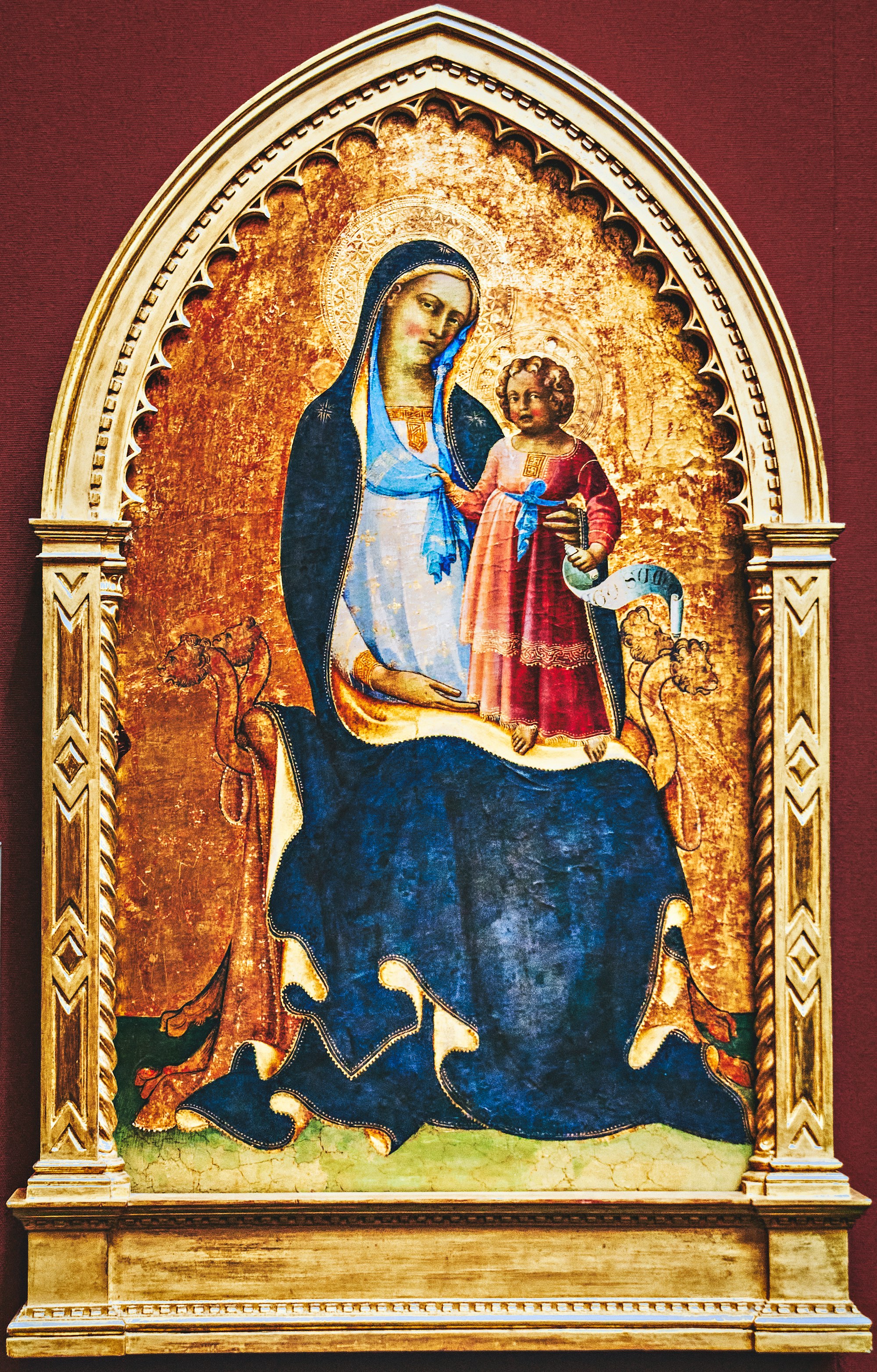
David: I'm trained, as I mentioned, as an iconographer which has a systematic approach to painting. There's very little expressive brushwork, and it suited me. So, you tend to plan everything out in advance. You generate a drawing, and then you think about how you're going to do the painting. There is some, but there's not much scope for correction of error. So, it means that it's worth thinking about what you do in advance. And so, now I like that because that suited what I felt was a systematic way of thinking. This had been become a habit through my scientific and mathematics training. I always felt nervous about being encouraged just to express my feelings on paper when I didn't know whether it was because I'm a man or because I'm British, or just I didn't have strong emotions. But I never really understood what I was supposed to do with the brush in my hand, if that was my purpose. Other than if you feel angry, it's very vigorous. And if you feel calm, it's smooth or something. That didn't seem to do it for me. So, the idea that I'm pursuing something that has a purpose — that's very clear, you're conforming to a purpose, and there is a set, a visual vocabulary which you're trying to employ — suited me.
Iconography draws very strongly on tradition, on the practices of the past. And so, part of becoming an iconographer is learning that and immersing yourself in it. Then eventually, being able to use that visual vocabulary, the stylistic elements. There's a very particular style to it in a way that might be your own voice, but it's still within the tradition. Eventually, if you become a master of it — we'll let others decide whether I am or not — you will understand where the soft spots of where you can change things, where you can't, and then why you might do something. Always, it's in conformity to an external purpose. Where is it going to be? How are people going to look at this? How big does it need to be if it's in that space? What are the other paintings around it so that it works in harmony with them? For example, is it for prayer? Is it for worship? Is it to decorate a home? All of these things will have an impact on what you do. It's through experience, I think, that you learn to create a painting, which in many ways will be very similar to things that other people have done. But in your own way, it's just modifying slightly. That's what it means to work within a tradition. You change as little as possible, not as much as possible.
Brandon: Wow. It's fascinating. I want to talk about just this broader cultural rift that seems to exist between the sciences and the humanities. I think of someone like C.P. Snow who talked about the two cultures of the humanities and the sciences, where you have folks who are trained in those particular disciplines and probably through similar kinds of school systems, like the ones you and I went to — where you really are forced to, from an early age, concentrate either in one arena or the other — then it ends up this sort of gulf of mutual incomprehension between the two fields.
I think in some of your own work, you've talked about — and I think in some of your blog posts — about the kind of resistance that many people have in the art world to the idea that mathematics or science can be a source of creativity or have anything to offer. What might you say, based on your experience of really straddling those two realms, to people in the arts about the value of the sciences?
David: To people of the arts? Well, what I would say is, first of all, that I think that gulf exists between the sciences and the romantic view of the arts which dominates today, which says that creativity is self-expression. The main goal here is to assert the self and to reveal the psychology of the artist. Really, the successful artist is simply one who conveys that emotion and, in some way, is able to influence those who have seen it, either to have not to share the emotion, to understand it, regardless of what that emotion is. I mean, it could be blazing destructive anger. That if an exercise, should we say, would cause great harm to those around you, well, in the romantic view, that doesn't matter. As long as I do that successfully, that's fine.
First of all, temperamentally, I was resistant to that, mainly because of my artistic training. But you can see how that doesn't suit scientific investigation, which assumes there is an objective truth. You're looking at an object and trying to discern something about it. For example, all the properties of it. You're looking at the world around you. It's just assumed that it is real and that it has certain physical properties. As a scientist, I'm able to look at those and investigate them, and perhaps learn some aspect of that truth. Now, what I like — and this came to me through my Catholic faith — was I started to look at the way that art was understood prior to that romantic view. So, it suited me far more to think of art as something that is trying to reveal the truth of what you paint in just the same way that a scientist does.
The other thing that I would say is that people worry about beauty. I think that, philosophically, I don't know how deeply I can go. But we talked about certain things just through their existence, having certain properties. They're called transcendent properties. That'd be transcendentals. But really, to the degree that an artist portrays something as it really is. We work on the assumption that all things are good, though some things are not as good as others, should we say. Everything has a beauty to it. If we can demonstrate the goodness of what's there, then the art should be beautiful. It should reflect that. Now, beauty is very difficult to measure. I'm not aware of any way that it can be quantified in itself. But that doesn't mean that we can't assume that it is a property of what we're looking at, that the beauty of a landscape — trees and fields with animals that people go, will travel across the globe to go, and see this. Is it simply that each person is responding in that way, and you could somehow train that out of me through culture? That's not to appreciate the fields or something. I know, certainly, environment has so influence on what I appreciate. But most people today will appreciate the beauty of certain things. There is some conformity.
Now, the fact that it's difficult to quantify or difficult to know precisely doesn't mean that it isn't true. For the scientists, I would say that, conversely, there is an overconfidence in the scientific world, in some aspects of it, as to the degree to which science can ascertain truth. What I'm thinking of here is that, historically, the great thing that allowed for huge progress in scientific research is the development of the scientific method. That method relies on an assumption that man's ability to use reason to understand the natural order is actually very bad. It's not that it's strong. It's that it's bad. Therefore, we can't trust the hypothesis to reveal much about the natural world. So, the scientist looks at the data, comes up with an idea, develops a hypothesis. But according to the scientific method, we won't trust that until it's been borne out by experiment, ideally, time and time again.
In other words, science is basically a process of trial and error, and you're backfilling the conclusions with the theory afterwards. And so, the success of science is actually the opposite of what most people think it is. It recognizes its weakness or man's weakness to understand the natural order through reason or law, and therefore relies on experiments. This actually goes back to a debate, I understand, between Newton and Kant. Kant wanted to develop a scientific method that didn't need any experiments whatsoever. Newton said, no, that's not going to work. We've got to experiment. Because otherwise, we're just not clever enough to do it. Now, with regards to beauty and what constitutes the beautiful, what's the experiment we do? How do we test that out? The answer is that, traditionally, they look to tradition. They look to the work of artists of the past, to say what styles, what subjects, what topics, what purposes for art have been shown to have appealed to many people over a long period of time. For the most part, we'll rely on that. Certainly, current circumstances might mean that I have to change it a bit. But I'm going to be cautious about doing that, because I recognize that my ability to produce something that's good and beautiful is flawed, really. I want to rely on the evidence of past people. So, those are the first things. I'm expecting you're going to push me on the mathematics of beauty, which I'll get to shortly.
Brandon: Sure.
David: But I think there are certain similarities in the approach of the artist and the scientists that many people don't realize that actually date back to the time when artistic method and scientific method, they both come from the same approach to investigation of the world around us, actually. Historically, the Romantics wrote from that. They're the ones who said it doesn't matter what you think. As long as I feel it and I can communicate it, That's fine. That's a very different approach. That's where the dichotomy appears, I think.
Brandon: Right. This raises a lot of really interesting questions. But do talk about beauty in art and science. I think there are a lot of scientists, particularly the closer you are to mathematics, there are a lot of judgments about beauty that are made around what counts as a beautiful equation and so on. Would you define beauty in similar ways in art and science, or they're getting at different kinds of things?

David: The scientist will talk about a beautiful solution, or a mathematician about beautiful solutions. Generally, what they mean is that it's powerful and simple. And so, they feel that the logic is as powerful and simple. What I would say is that when the scientist develops a hypothesis, he doesn't typically reason his act. Interestingly, the scientists would argue. But typically, what happens is that you're aware of a pattern of what occurs. So, you're looking at the language of science. It's typically mathematics. Not always. But typically, that dominates. But you're effectively saying, I can see a pattern here, an order, when I take the wide view. Then for something missing, and that missing point goes there. Let's test that out.
Ultimately, it's rare that the hypothesis is produced through reason. It's very often produced through an intuitive guess. Clearly, it's in the whole — only the scientist who is aware of all the theory, who's aware of the mathematics can make that leap. But effectively, it's intuition. It's guesswork, and then you test it. You say that seems to work. Then you try and explain it. That's where you come up with a theorem that the mathematical equation explains the new thing. Then you try and predict something else that has never occurred before. You test that, and that becomes a theorem. It's from hypothesis to theorem.
Now, the ability to see the pattern of things is actually the same as the ability to apprehend beauty. Beauty recognizes the relationship between things that are appropriate to what it is. It sees a pattern in the world and is able to complete it. And so, that's what creativity is. It's being able to spot that pattern. Now, there are cases where scientists have done this. They've looked at plots on a graph. The one that was brought to my attention was a scientist in the '60s — it's just such a nice example — called Murray Gell-Mann, I think his name is pronounced, who discovered the quark, the subatomic particle. There were nine of these particles known. He looked at the plot on a graph of these nine particles, and they effectively looked like a pyramid with a point missing. The only reason that he investigated the existence of this 10th quark was, it looked to him as though there ought to be another one in that position. And so, it was actually an arrangement mathematically that they're not arranged themselves like this in space. It's a mathematical plot that has four dots on the baseline, three above it, two above it, and then you have one above it. And so, it's 10 dots in the pattern of a pyramid effectively.
Now, what's interesting when I read that is that when you go back to the ancient Greeks all the way to Pythagoras — by reputation, they are described by Plato — they tried to describe the pattern of order musically, mathematically in a way, and look for those patterns that delighted people. Because they associated this with the beauty. They felt that if they could reproduce those patterns that they thought they could observe in nature, especially in music, and buildings, and in other things, then if they were correct, you'd look at the buildings and you'd say they were beautiful. They looked at the proportions of man, for example, and tried to describe them mathematically, and then use those same proportions in buildings. The premise here is that if we find man generally beautiful, good in his being, and then we copy that in buildings if it's part of the mathematics of it, then the building will be beautiful. Now, how do you test that hypothesis? You then look at the building and you say, is it beautiful? Of course, that will vary depending on different people, because beauty is hard to know. But the fact that millions go and visit ancient Greek temples in Ephesus or Athens, for example, suggests to me that they probably got something right. So, there is a similar approach here.
Now, just to come back to Murray Gell-Mann and the quarks, the pattern, I think it's a coincidence. I am not going to say it's more than that. But the pattern of those quarks in the pyramid is something that Pythagoras described as the fundamental pattern of the universe. Because it was a way of symbolically representing musical harmony which they felt was an audio sign, if you like, of the pattern of order that pervaded the cosmos. Then they called it the tetractys. It's had almost sort of religious significance for the Pythagoreans. But it was exactly that same pattern of the 10 dots in that arrangement that, subsequently, Murray Gell-Mann found to be the basis of the arrangement of subatomic particles. So, you read into that what you will. I'm not going to make any claims beyond that. But I would say that the Pythagoreans wouldn't have been surprised, shall we say, at that discovery.
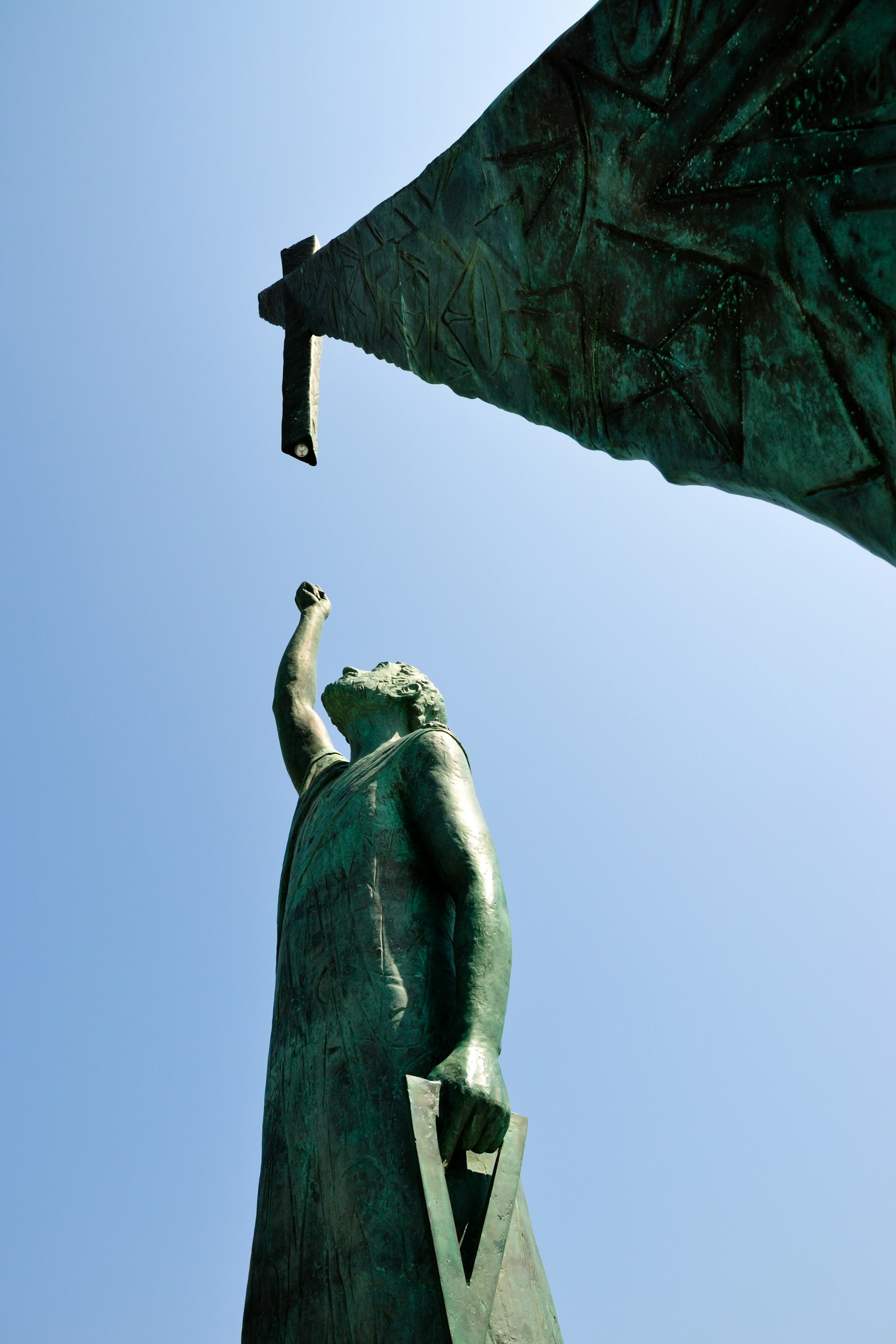
Brandon: There are people who argue that beauty could be misleading at times. I think particularly in theoretical physics, there's this argument that, on the one hand, you do have this experience of people like Gell-Mann. Sometimes it does seem like the beautiful solution or the beautiful equation turns out to be experimentally verified. But in other times, it doesn't. There have been a number of cases where theories that appeared beautiful in the beginning turned out to be wrong, and then those that turned out to be correct were ones that were initially seen as ugly. There was some kind of resistance to embrace them. But eventually, once it turned out that they were right, we changed our judgement of what counts as beautiful. I wonder if you have any thoughts on when beauty can be misleading, and what it takes to correct our perceptions there.
David: I will repeat the point about beauty, that I said about scientific investigation. There's no measure by which we can be certain about those judgments. Any particular individual is as likely to be wrong about it as any other. We only really get a sense of it if we trust human nature to seek out some things beautiful, when we look across many people over a long period of time. So, in the artistic field it's saying it's those things that have transcended their own time. Even then, it's not some sort of infallible guide. It's just the best we have, I would say.
Now, in regard to the beauty of a mathematical equation, it's a difficult one because we're talking allegorically or metaphorically. Are we really saying that the equation is beautiful? It's a response in the scientist. As Einstein said, the answer is simple. It comes from God. He felt there was something there. But it's always possible to make mistakes. Then the other thing is that we do become accustomed we. We can be affected by what we see. We develop that sense of what is beautiful and good. Let's assume that what previously was ugly turns out to be correct scientifically. Then as people look into it, they start to think of it as beautiful because they appreciate its simplicity, or however you're judging the beauty of an equation. You appreciate it in other ways. Well, that is part of the learning process.
In the end though, the test of whether it really is true, of course, we know in science that most theories at the very least are revised in time. So, I don't think it's the last word in what we're going to say about it. Scientists are always ready to revise the theorems. Otherwise, they're not authentic scientists. But even if it's true, then we can develop that taste. That's why if you want to develop an ability to see what is beautiful, in the training, what you do is you expose people and analyze things that are generally accepted to be beautiful. So, the scientist, if you wanted to increase his ability intuitively to understand or to create that new equation, to see the new pattern in the order, you develop their ability to apprehend beauty. Because then their natural appreciation of the patterns, the relationships between things will be enhanced.
Now, in the scientific context, you may study equations that are generally accepted to be beautiful and over a long period of time have not been revised. Then start to ask yourself what is beautiful about those. Then as you expose yourself to them, that will influence your taste. You will start to look for things that tend to correspond. So, that canon of great works of mathematical beauty, as you've tried to develop a new equation. Similarly, the artist learns how to appreciate the beauty of a particular tradition by copying and imitating initially great works of art. He or she immerses themselves in the beauty of that tradition. Then you have to decide, well, what's the canon that we're going to choose. To a certain degree, you're relying on people who understand the tradition to pick this out. But as a principle, you're looking for those things that appear to have been appreciated over a long period of time by many people. You're relying on human consensus or human nature, as far as possible. For something like this, it's the best we have.
You actually trust in the common taste, not in the elites. Typically, in somebody who study aesthetics at a deep level, or should we say that those who've been to university, especially the modern humanities, they have to have good taste educated out of them, I would say. They learn not to trust their common sense, their automatic response. Frankly, they're going against what most people would appreciate. They would go to Florence and say, "I prefer the modern building on the outskirts because it's brutalist. And this is wonderful." Whereas, 20 million other people will say, "Well, no, I'm going to the drawing in the center because that's what I think is beautiful. I don't care what you think you will eat."
Brandon: Let's talk a bit about the value of the beauty of science for theology or for people who are people of faith. Certainly, in some traditions like the Islamic tradition, it seems like mathematical beauty is very central to their religious art. But I wonder whether today, there's a lot of people who talk about mistrust of science among religious populations, particularly in the US. Is there any way in which the beauty of science or these beautiful aspects of science could be a way to build trust in science or lead people who are people of faith to appreciate the value of science, do you see?
David: Well, first thing, I'm just going to your example of Islamic art and Islamic patterned art. There's a tradition of Christian pattern art. The two traditions have often fed into each other. I think, originally, Islamic culture would pick it up from conquered Byzantine lands especially. Then they developed it and made it into something wonderful and original of their own. Then from time to time, you would get Islamic craftsmen coming into Christian lands, and teaching Christians how to create in this way. And you get beautiful patterned art. In Sicily, for example, when the Normans reconquered Sicily around 1,000 A.D., they used Byzantine craftsmen, Islamic craftsmen to create beautiful patterned art. As you say, there is a mathematical symbolism that underlies all of those patterns. That speak to those of faith. That symbolism speaks of God.
For someone in faith, beauty is a sign, shall we say, of inspiration. Either in nature itself, we'd say it's a sign that a Creator made it. It speaks of something beyond itself. We'd say we'd point to the fact that when many people see a beautiful sunset, we're enamored of it. But we always want more. It never quite satisfies us. We say that yearning that it creates in us or the perfection of what we see is actually a yearning for God. Those are faith, I would say. The other thing is that the mathematics, there is these mathematical formulas that we used in the production of Islamic art and can also be used in the design of architecture according to the visual proportion, which would be in not just Islamic and Christian societies but many societies that look to nature for inspiration and idealize it. They always round things up and down into simple mathematical formulas and assume that the proportions that that's describing is a perfection of what it is. They have this almost understanding that the world is, in some sense, full. We'd say, as Christians, it's good that it's imperfect, but it points to a perfection. And so, that is a scientific approach. It's philosophical. There's a philosophy and a theology behind it, I would say.
In regard to the perception that there are two worlds, I would just say, as a scientist, I've never seen any contradiction between one and the other. I'd love to know why people are so convinced that one contradicts the other. I haven't seen any as a Catholic. And so, that's the sort of traditional Christianity that I'm drawing on to try and make the comparison, shall we say. It hasn't undermined any of my beliefs in the value of science and technology, and the modern world to provide great benefits as a result of that. I'm very glad I live now. Because when I get two things, I can go to the dentist or anything else. I don't see what the problem is, first of all.
Then what I would say is that the study of these mathematical patterns or types that I believe that, in all its complexity, the mathematical descriptions of the natural order that the scientist uses, in some way, they participate in them. They're not unconnected. That's just an intuition I have. I can't prove it, apart from those nice little examples of Murray Gell-Mann. But there aren't enough of those to make, to say that you can connect the two worlds. But I've talked to enough people who are creative and come up with new ideas. For the most part, the people that I speak to, they don't know where they get the idea from. It just pops into their head. They see it. I think I believe that the more ways in which we observe the natural world and try to understand it and see the patterns of order and beauty that are in there, and appreciate it as beautiful, the more it will actually engender our creativity. So, if you are a research scientist, I would say that a traditional artistic training and everything to do, the whole thing, but certain aspects of it including the mathematics of beauty — which is a very-well established field, largely rejected through with it by Enlightenment thinkers, actually. But the study of it would actually enhance your ability to come up with new ideas and your creativity as a scientist.
Brandon: Right. I imagine, conversely, for artists, you would say mathematical scientific training would provide some better — I mean, how would that contribute?
David: First of all, the mathematics of beauty, that should be a living, developing field. And so, one would imagine that there'll be all sorts of mathematical formula, which we now know describe the natural world, that could add to what an artist does. For example, if you paint an icon and you have folds in the cloth — I'm going to show. I'm talking to the camera here. You see, in the crook of my elbow, there are these lines coming out. I noticed that the artists who seemed to do this beautifully didn't actually paint precisely what you see. They move things slightly, so that you have a series of sort of elliptical or parabolic curves. That's what the scientists will describe, something that the slope of the curve gets gradually sharper. It actually follows that if you move your elbow and hand at the same time, it will naturally describe a parabola or something like that, or an ellipse. I forget which at this point. But nevertheless, I started then to stagger elliptical curves.
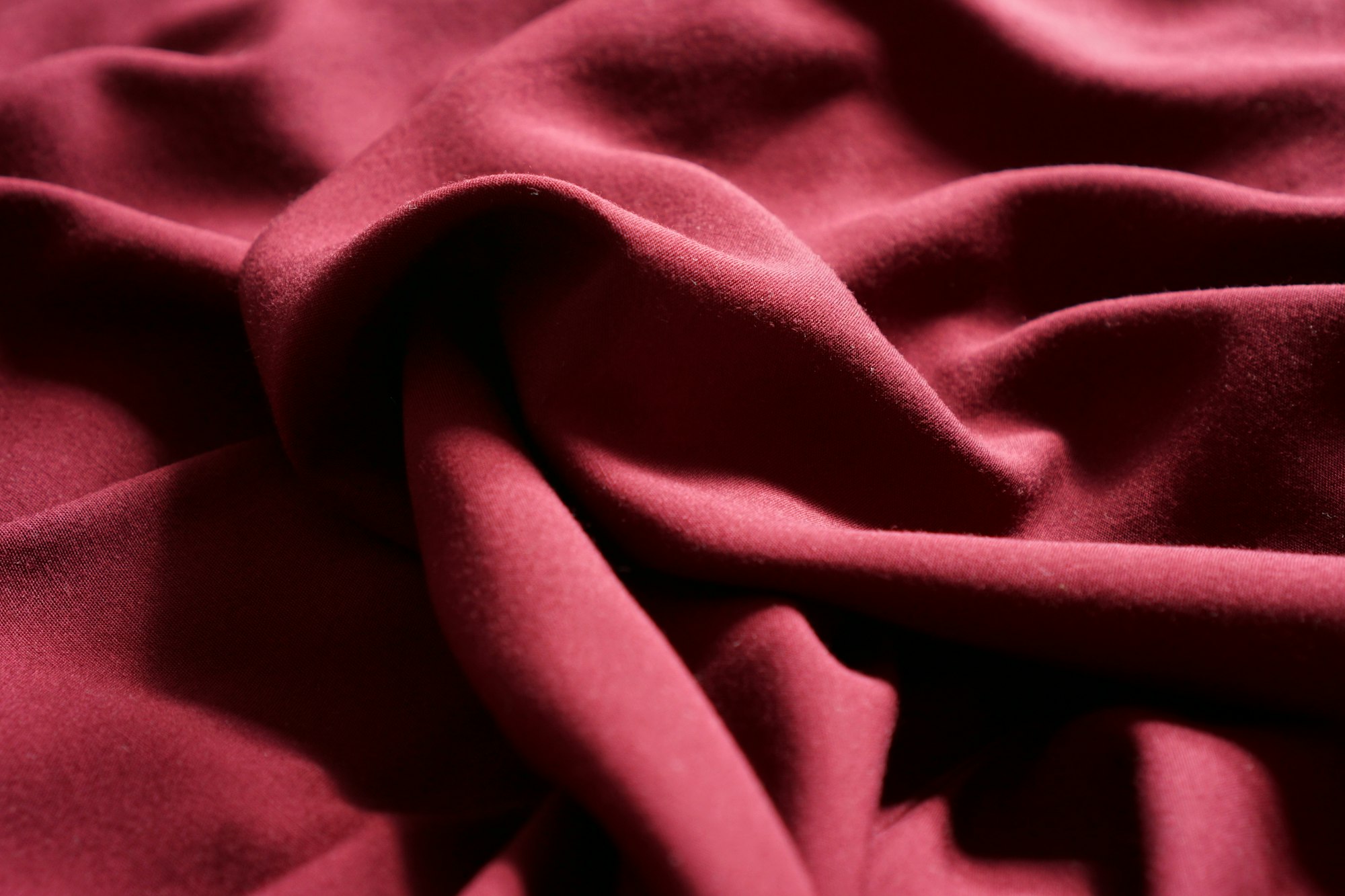
I remember plotting these when I describe radioactive decay or something. You see the same idealized shape in the curve. I remember doing this when I was at the school in Florence. I was looking at this. We were studying a plaster cast, a Bernini sculpture. I could see that — it looked to me like he'd done this. He had these ellipses that actually he carved very strongly into the fabric, as he was portraying in the sculpture. That wouldn't have been how it fell naturally. But it really had a beauty and a vigor to it. So, I was now doing a drawing of the Bernini, which is a sculpture of the person. As I was doing the drawing, if I painted it exactly as I saw it in the angle I was looking at it, that rhythm that Bernini had introduced wasn't as strong. So, in my drawing, I reintroduced it. I accentuated it from the angle that I was looking at it, so that you can really see it very strongly. What was interesting was, when the teacher came around, he looked at my drawing and said, "You have natural Baroque rhythm." It couldn't get a higher compliment from the teacher. But I was thinking, well, actually, what I'm using here is, I'm observing what I'm seeing. But I'm making use of my scientific training. I remember drawing these ellipses and parabolas, and the shapes of them that describe so many of the natural processes that a physicist would chart in his work.
Brandon: Wow. That's amazing. That's great. David, thank you so much for taking the time again to join us today. Where can our listeners and our viewers find your work? Where would you direct them?
David: I actually haven't done a lot online, but you can go to thewayofbeauty.org. I wrote a book called The Little Oratory, which has about 20 plates in the back which has my sacred art. And so, those are the two places where you can probably see it most. But these ideas, predominantly in my blog thewayofbeauty.org, I would say.
Brandon: Perfect. Great. Well, we'll add those to our show notes. Thanks again so much. This has been really such a pleasure.
David: It's a delight. Thank you very much indeed.
If you found this post valuable, please share it. Also please consider supporting this project as a paid subscriber to support the costs associated with this work. You'll receive early access to content and exclusive members-only posts.
